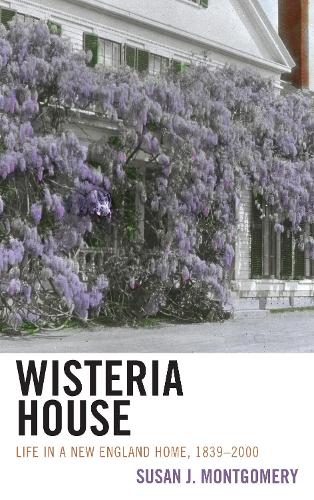
Wisteria House: Life in a New England Home, 18392000
(Hardback)
Publishing Details
Wisteria House: Life in a New England Home, 18392000
By (Author) Susan J. Montgomery
Bloomsbury Publishing PLC
Rowman & Littlefield Publishers
25th January 2022
United States
Classifications
Professional and Scholarly
Non Fiction
Local history
Museology and heritage studies
Management and management techniques
974.45
Physical Properties
Hardback
200
Width 159mm, Height 237mm, Spine 15mm
503g
Description
Wisteria House is a North Andover, Massachusetts landmark, named for the vigorous vine that has flourished on the veranda for more than 150 years. More properly known as the Field-Hodges House, it belonged to only two families. The last owner, Sarah Moore Field, died in 1988, leaving her home completely furnished and packed to the rafters with the accumulated belongings of three generations and hoping that it would become a historic house museum. It did not. A variety of circumstances required a more creative solution.
Wisteria House: Life in a New England Home, 1839-2000 is a key element of that solution. It is a permanent record of the lives lived in a particular house in a particular town at a particular time based on the buildings, furnishings, clothing, personal effects, photographs, correspondence, and financial papers of two upper-middle class families. The text and illustrations address gender roles, childhood and education, household economy, health and medicine, work and leisure, and community history. The themes of public history, preservation, and stewardship underpin the narrative.
The story of the Field-Hodges Houses lies at the intersection of well-meaning, devoted amateurs trying to save a beloved old house and professionals charged with the dispassionate consideration of the financial viability and public relevance necessary for a successful historic house museum. The book is unique in that it is the final component of a preservation project. After the building and grounds were secured, the significant collections safely in the hands of public institutions, financial obligations met, and the intent of a Last Will and Testament fulfilled, Wisteria House preserves the history itself. As an example of stewardship, the entire project occupies a notable position in the current debate over the future of historic house museums in America.
Reviews
This familial house history of one extended middle class Victorian household in North Andover, Massachusetts, ends as the last daughter prepares her home to become a house museum. When her long, long life absorbs the needed funds to do so, author Susan Montgomery helped all parties concerned to find homes for its many contents.
Maybe Wisteria House, Life in a New England Home, 1839-2000 could be written in some other corner of the country, but I doubt it. Thousands of objects, clothing, papers and ephemera found new homes in dozens of New England local museums and regional institutions better endowed to protect and interpret them for future generations. Wisteria House now guarantees each of those collections will be as well understood as they are protected.
This well written family story speaks both to those who think we have too many house museums and others who understand such places are a focal point for creating local history. This third alternative shows how solid historical research and curatorial analysis can place the past in new hands while still honoring the donors wishes.
Susan Montgomery takes us on an adventure, centered on a house--a home--based on more than a centurys worth of everyday items. Wisteria House unwraps a remarkable time capsule created by Sarah Moore Field when she made the decision to preserve the history of her extended family and their friends. Using the thousands of family pieces, including the most intimate correspondence, photographs and diaries, Ms. Montgomery paints a vivid picture of individuals living in or connected to the house. She successfully reflects life in small but distinctly American towns, here and across America, in this thoroughly engaging narrative. A must have for all students of material culture, social history, museum studies and anyone who enjoys the story of ordinary lives, extraordinarily preserved. -- Carol J. Majahad, former executive director, North Andover Historical Society
Susan Montgomery brings Wisteria House to life using the letters, documents, and artifacts of the Field Family of North Andover, Massachusetts. Sallie Moore Field is at the heart of the story born there in 1885; she died at home 103 years later. Miss Field preserved the familys history, the home, and landscape intending it to be a house museum. This was not to be but a dedicated group of historians and overseers worked to preserve the familys history and the house. This publication is that engrossing story. -- Kenneth C. Turino, manager of community partnerships and resource development, Historic New England and Tufts University, museum studies
Author Bio
Susan J. Montgomery has worked in art and history museums for thirty years. While still in graduate school, she was hired as a consultant to evaluate the extensive collections of the Field-Hodges House in 1992, a project that has become a labor of love ever since. While curator at Strawbery Banke Museum, she directed the furnishing and interpretation of Shapiro House, including an NEH-funded interactive CD, Becoming Americans, which earned an American Association of Museums Gold Muse Award. As an independent scholar, she curated exhibitions at the Addison Gallery of American Art, the Hood Museum of Art, the Leepa-Rattner Museum of Art, and the Henry B. Plant Museum. She has published widely in the field of American Arts and Crafts era ceramics
